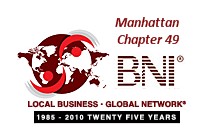 It’s Tech Thursday from Smallbiztechnology.com. Each week we take a quick look at business and technology news and updates for the small business community and share them with you in a quick and simple round-up.
It’s Tech Thursday from Smallbiztechnology.com. Each week we take a quick look at business and technology news and updates for the small business community and share them with you in a quick and simple round-up.
Â
Â
Â
Â
The All New Weebly Has Arrived!

Weebly updates features to enhance the user experience.
Weebly, a DIY website creator, has recently made enhancements to it’s offering, based on insights they gained from their customers, to create a nuique, high-quality site that meets it’s users needs.
Changes to the site include:
The All New Site Creator: Weebly completely rebuilt their Site Creator from the ground up to give you a more modern, powerful and intuitive way to create and update your site. Many improvements were made both to the design and the user interface, but at the core, it’s the same Weebly you know and love.
The Mobile Editor:Â Now you can see how your mobile site looks on iPhone and Android, choose a unique mobile theme and edit your mobile site directly from your computer. Whether you make updates to your main site or to your mobile site, they make sure both sites are always in sync.
The Site Planner:Â Get ideas and inspiration to help you create a high-quality site or even to have fun refreshing your current one. Site Planner shows you how to organize your information, layout your pages, choose your site address and grow your traffic. And, best of all, it can be easily accessed at anytime while you are working on your site.
You can try the all new Weebly by visiting their website here.
Â
Sam’s Club Launches 25-City Small Business “Boot Camp†Series

Â
CEO Rosalind Brewer announces community small business commitment at annual Shareholders’ Meeting
Â
Sam’s Club CEO Rosalind Brewer announced the launch of a collaborative program supporting small business owners and entrepreneurs in 25 cities - the Grow Your Business Boot Camp series. The hands-on training seminars are backed by a funding commitment of $500,000 from Sam’s Club.
The Boot Camp series allows local Sam’s Club leaders to collaborate with community non-profits and organizations to provide small business training seminars. These regional collaborations will empower local business ownersâ€"including those owned by women, minorities and veteransâ€"to learn new skills and ideas that can help their businesses thrive.
“I’m excited to kick off our Small Business Boot Camp in 25 markets across the country,†announced Sam’s Club CEO Rosalind Brewer at Wal-Mart Stores, Inc.’s 2013 Shareholder’s meeting. “Associates [can] provide small business owners with valuable training and give these businesses the support to really succeed. [Together we are] making a difference community by community.â€
You can read more about the “Boot Camp†series here.
Â
PageWoo Offers New Mobile Advertising Solution with Launch of NearWoo for Small Businesses to Target and Acquire New Customers
 NearWoo Enables Business Owner To Target Defined Locations With Hyper-Relevant, Dynamic Mobile Ads
NearWoo Enables Business Owner To Target Defined Locations With Hyper-Relevant, Dynamic Mobile Ads
PageWoo, a mobile advertising solution provider, today launched NearWoo, the only local solution for identifying, targeting and acquiring new customers with the power of mobile advertising. NearWoo layers consumer psychographics on top of big data solutions that uses hyper-local, geofences and big data to efficiently target interested consumers with personalized or custom ads and messages.Â
“It’s hard to make money with local commerce because it’s difficult to get to scale. By launching NearWoo, we helped solve an extremely complicated problem with an engineered solution that combined a lot of pieces of one puzzle to make it appealing to big brands and smaller companies.†says Jason Crilly, Founder & CEO of PageWoo. “Mobile advertising doesn’t work without location. Location is the new cookie in mobile ads and PageWoo is currently seeing the pay off upward of 50% growth since we’ve launched.â€
NearWoo is one of the easiest and ubiquitous tools on the market that gives you all the necessities to create and deliver the ads you want. PageWoo gives users access to simple web apps to create content, target an audience and view campaign results. In addition, the easy-to use platform allows businesses the option to choose how much they want to spend based on how far they want their message to travel. Prices range from free to $500/month respectively. The free option lets any business owner try NearWoo by advertising to their own neighborhood for free by going to http://nearwoo.com/sampler?code=standard There are also advanced targeting options for the more sophisticated advertiser or brand looking to target demographics within a given area.
You can see more about PageWoo’s new mobile offering here.
Have You Seen The All New MailChimp?

Â
MailChimp introduces a new and improved version of their e-mail marketing program.
Â
MailChimp has a motto that hands on their wall: Listen Hard, Change Fast.  They’ve been listening and have spent countless hours visiting their customers, learning about how they work, and have used that research to create a new and improved version of MailChimp. The new version is more efficien, more flexible and makes for a more collaborative experience.
Here what you’ll find in the new MailChimp:
Responsive Design - They’ve introduced a responsive design that’s been optimized for tablets, so you can get your work done from wherever you are.
Simplified Navigation and Subscriber Profiles - Account notifications are now displayed in the navigation, so you won’t miss out on any important info about your campaigns. Switch to Pro mode to simplify the layout, or collapse and expand menus on the iPhone to create more space when you need it. Search for subscriber details, campaigns, lists, and reports from anywhere in the app. We also made some big improvements to the layout and functionality of subscriber profiles. You can scroll horizontally to reveal all your fields and hide columns you don’t need to see, leaving more room for the content that matters.
Comments Inside the Editor - We talked to a lot of our customers and learned that for most of you, email newsletters are a group effort. New MailChimp makes it easier for teams to collaborate. You can exchange feedback right inside the editor, view comments in real time, and respond whenever you’re ready.
You can check out the new MailChimp by visiting their website here.

 Ramon Ray,Â
Ramon Ray,  Adrian Miller,Â
Adrian Miller, 